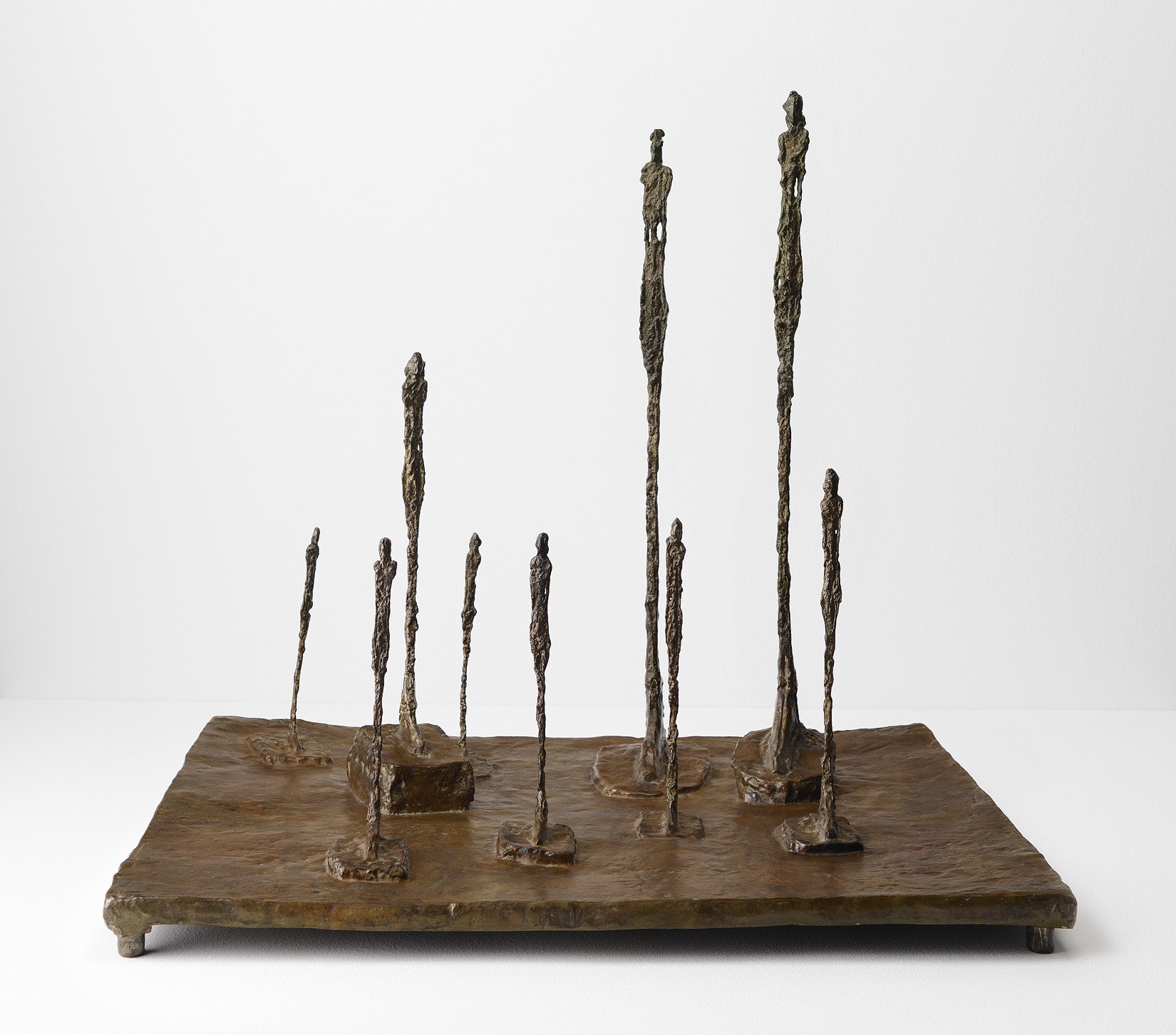Alberto Giacometti
The Glade: Composition with Nine Figures, 1950

Alberto Giacometti
The Glade: Composition with Nine Figures, 1950
Kunst Museum Winterthur, Depositum der Alberto Giacometti–Stiftung, 1976
Foto: SIK-ISEA, Zürich (Philipp Hitz)
Alberto Giacometti was in Geneva during the Second World War. In 1945 he returned to Paris. His old studio was still intact, and he could have simply continued working. But for Giacometti it was not easy to simply begin working again. During the war he’d had an intense and critical look at the human figure, and he wanted to create life-size figures. Figures he encountered in the street, as he remembered them.
When Giacometti modelled such figures, they were always more elongated and delicate than he’d intended. He stood these small figures on the floor of his studio just as they were. And while looking at them it suddenly became clear to Giacometti that this random arrangement was perfect. It was what he’d wanted to achieve, and this was how The Glade came into being.
The figures are standing close to one another, and yet they seem isolated. Each one has its own dimension, its own plinth. We therefore view each figure separately and become aware of the differing
La clairière means the Glade or clearing. Neither the wood, nor the clearing is present, so the meaning of the title remains ambiguous. The clearing is the place where the figures are standing. A clearing has been created in nature or in the thicket of the city.While viewing the work we not only perceive the figures but also the space around them. The more refined the figures are, the more powerful the space becomes and the more they appear to be further away from us. The distance between these and the human figure grows; it becomes insurmountable. This is something we have to accept.


